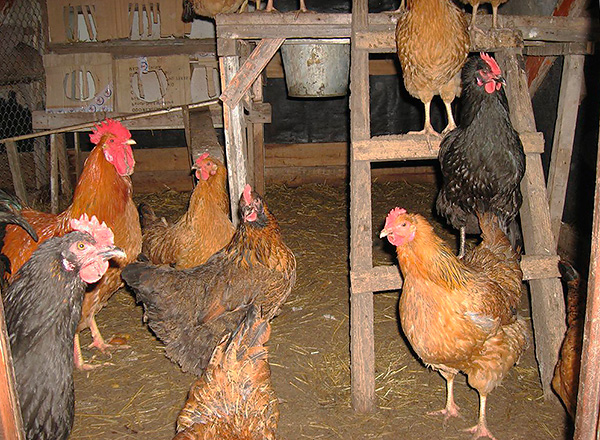
Next you will learn:
- What exactly are the rats dangerous in the chicken coop, do they steal eggs and can they attack chickens;
- Why get rid of rats in the chicken coop is often much more difficult than in a private house;
- What remedies for rats are advisable to use in the chicken coop and how to do it correctly so as not to harm the bird;
- How to use rat traps to effectively catch rodents without breaking chicken legs;
- What are the nuances that are important from a practical point of view when considering the use of ultrasonic repellers and rat poison in the chicken coop;
- And finally, what still needs to be done so that rats never get into the chicken house again.
In most cases, getting rid of rats hiding in the chicken coop is much more difficult than getting these rodents, for example, from a private house. And the main problem here is that many tools that allow you to fight rats in the chicken coop are dangerous for the chickens themselves, and therefore you need to use them with additional precautions, which, in turn, significantly complicate the fight itself.
At the same time, it is impossible to put up with rats in the chicken coop and delay the start of the fight against them. Still, rats carry a large number of pathogens of deadly diseases, so the presence of rodents in the chicken coop poses a real risk of infection and death of all birds.
In addition, rats in the chicken house harm in other ways:
- They attack chickens, they can nibble their fingers on their paws during sleep;
- Kill and eat chickens;
- They steal eggs.
By the way, it is theft of eggs that most often attracts attention in the first place. Often, rats can live for months in the chicken coop or near it, and the owner does not notice this, writing off chicken diseases for other reasons. But as soon as the pests begin to drag eggs, it becomes noticeable immediately, causing the farmer an especially strong anger.

In general, the way rats steal eggs from the chicken coop has become a kind of legend. In most cases, the animal simply pushes the egg and rolls into its shelter. Here the rat bites its shell with its teeth and licks the contents of the prey. Often the egg breaks during transportation, and the rat then licks the protein and yolk from the floor. Sometimes she just gnaws an egg in the place where she found it, and here she regrets its contents.
On a note
It is erroneous that chickens do not rush if rats are wound up in the chicken coop. There is no physiological connection between the fact that chickens see rats and are sometimes afraid of them, and the fact that they do not rush. Moreover, chickens do not have an inborn fear of rats. Often the rats themselves are afraid of chickens, and especially lively roosters can attack rodents and peck them to death. In fact, the impression of the owner of the chicken coop that the hens are not flying is explained by the fact that the rats simply steal all the eggs or most of them. Which, however, happens quite rarely.
There is also a legend that rats steal eggs in a very ingenious way: supposedly one animal grabs an egg with four legs and lies on its back so that the prey lies on its stomach. Another rat grabs her tail and pulls into cover.
Tales of such maneuvers have been known since antiquity, but there is no factual documentary evidence of such rat inventiveness. Neither video nor photographs of this process exist, there are only relevant paintings by artists - this allows us to suspect that in reality rats do not steal eggs in this way.

In any case, it is not even so important whether rats drag eggs from a particular chicken coop and in what quantities they do.The fact that these pests are wound up in the chicken coop is already an occasion to do everything possible to get rid of them.
So how to deal with annoying rodents? Let's figure it out ...
Difficulties in fighting rats in the chicken coop
The most effective remedies for rats are trap crush and poison, it is they that allow you to remove rodents almost always from any room. However, as you understand, these tools are dangerous for chickens: if a bird steps on a trap, then a triggered spring may well break her leg, and poisoning of chickens with rat poison in many cases ends in their death.

Thus, in most cases it is impossible to poison rats directly in the chicken coop. Even if you place the poisoned bait in a kind of shelter inaccessible to chickens, rats can drag it all over the chicken coop, and the problem, therefore, is not eliminated.
So, the idea of just taking and putting the crush in the chicken coop, or pouring poison in the corners, should be abandoned right away: the product should not be accessible to birds, but rodents should be able to easily get close to it.
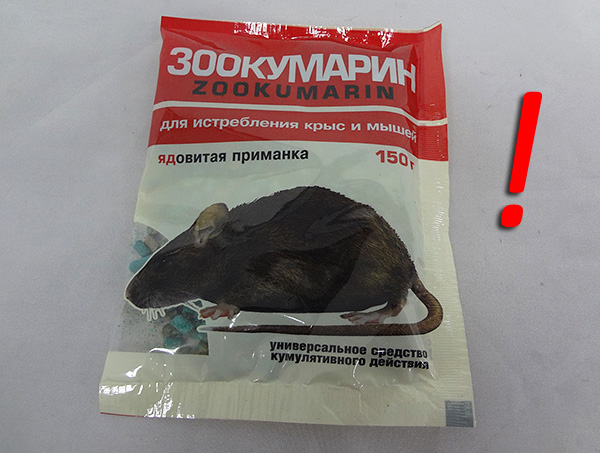
This problem is solvable, but its solution is fraught with some technical difficulties - you will have to create a special design that allows you to protect chickens from injury and poisoning. We will talk about how to do this, and thereby most effectively fight rats, below.
Various folk remedies for rats in the chicken coop for the most part are ineffective, and you can’t rely on them alone, although sometimes some of these remedies can also give a certain result.
Destroying rats in the chicken coop: the main toolkit
In most cases, rats can be destroyed in the chicken coop using rat traps, which are not accessible to chickens. There are two ways to ensure this inaccessibility:
- The trap is charged and placed in a box with a hole with a diameter of 5-6 cm, through which only a rat can climb. As a bait, a strongly smelling agent is used - for example, a piece of fried meat or bread with vegetable oil. The method is suitable for any chicken coops, except those in which small chickens live;
- Or the crush is placed on the upper shelves, on which the tool or various trash is stored and to which the chickens do not get. Of course, here the trap will work only if the rats themselves run along these shelves.
Another option is to catch the rat in the chicken coop alive. It is safe for birds, since chickens will not fall into the live-trap, but is associated with some difficulties in exploiting the live-traps themselves: they will need to get the rat out of the trap so that it does not bite you, and then you will still have to do something with it (kill or release). In addition, live traps are more expensive than crush dies.

Also, the fight against rats in the chicken coop can be carried out using ultrasonic rodent repellers. Good powerful devices really scare away the rats and prevent them from entering the chicken coop, but such scarers are quite expensive (much more expensive than poison and rat traps). Cheap "tweeters" are less likely to produce results, the less they cost.
And only extremely rarely can rats be killed in the chicken coop with the help of poison. We will also talk more about how to do this correctly.
Coop traps and specifics of their application
The easiest way to get rid of rats in the chicken coop is to use the rat trap crush in a special protective box. The design is implemented quite simply:
- Any box of sufficient size is taken, cardboard or wooden;
- In its walls, right near the bottom, several holes with a diameter of 5-6 cm are cut;
- At the bottom of the box is a charged trap with a bait;
- The box closes, as tightly as possible, and its lid or opening doors are sealed with tape. This is necessary so that in case of turning over by her hens, she will not open at the same time;
- The whole structure is installed under one of the perches.
You can check this trap about once a day by removing the tape and opening the box.
On a note
On sale today there are special houses in which you can place traps and poison for rats, but because of the relatively high cost they are not in special demand.
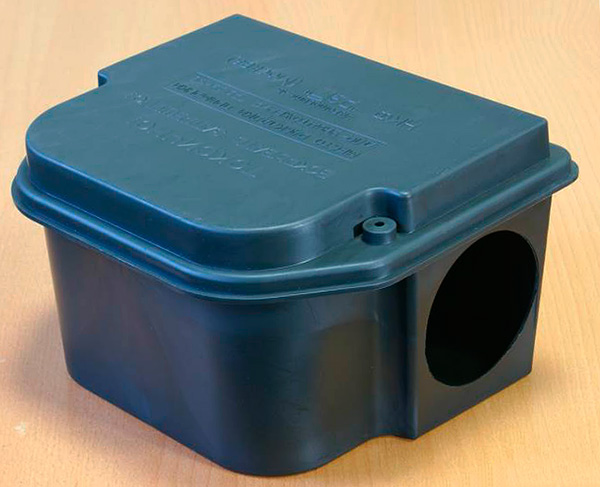
It’s easier to work with a live trap - it just charges and installs anywhere in the chicken coop. What to do with a caught rat, each owner of the chicken coop decides independently. Usually they just give it to the cat. The only question is whether a rat trap is needed if a cat lives on the site ...
It is important to remember that there can be several rats in the chicken coop, and traps should be used as long as the pests in them continue to be caught periodically. If in two weeks not a single rat was caught, then we can conclude that they were not left in the chicken coop.
How to use rat repellers in a chicken coop?
Reliable protection of the chicken coop from rats can be provided only by sufficiently powerful repellers. In particular, the effectiveness of the Chiston-2 and Chiston-2 PRO devices, as well as the Biostrazh device, was tested - according to the results of the experiments, they made it possible to get rid of rats and mice indoors in about 9 out of 10 cases.
Such scarers are quite expensive:
- Chiston-2 - about 2000 rubles;

- Chiston-2 missile defense - about 3,000 rubles;

- Chiston-4 Biostrazh - about 4000 rubles.

There are many less reliable ultrasonic repellers for rats and mice, and, as a rule, the less the device costs, the lower the probability that it will really help get rid of rodents. However, sometimes even inexpensive models work.
The repeller is installed directly in the chicken house, is plugged into a wall outlet and works continuously. Practice shows that when using a powerful device, rats leave not only the chicken coop, but also from the adjacent buildings.
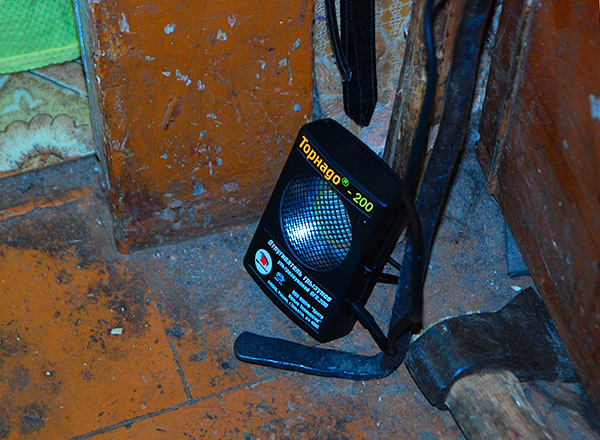
Nevertheless, even if a sufficiently powerful device works continuously, there is a risk that from time to time rats running into its area of action will cease to be afraid of it. Therefore, after the result is obtained, measures should be taken that in the future simply do not physically allow rats to enter the chicken coop.
On a note
It should be borne in mind that ultrasonic radiation effectively acts only in the area where the repeller is directed and, like rays of light, cannot overcome physical obstacles - walls, partitions, etc. In addition, it is not recommended that a person stays for a long time in the operating zone of a working device, especially a powerful one. In some cases, this can cause a headache or ringing in the ears, so before you do any work in the chicken coop, it is recommended to turn off the device.
Poison in the chicken coop. In no case?
It should be understood that no matter what the poisoned bait for rats is and no matter how it looks, there will certainly be chickens that will detect and taste it. Especially if the owner of the chicken coop is not particularly worried about the choice of funds. As a result, numerous cases of poisoning of chickens by rat poison are known, most of which ended in the death of birds.
The main symptoms that the chickens were poisoned by rat poison are a refusal to feed, lethargy, ruffled feathers, impaired coordination of movements, trembling, convulsions, vomiting and droppings with blood. The manifestation of these signs is possible immediately, or within 1-5 days, depending on the toxic substance.
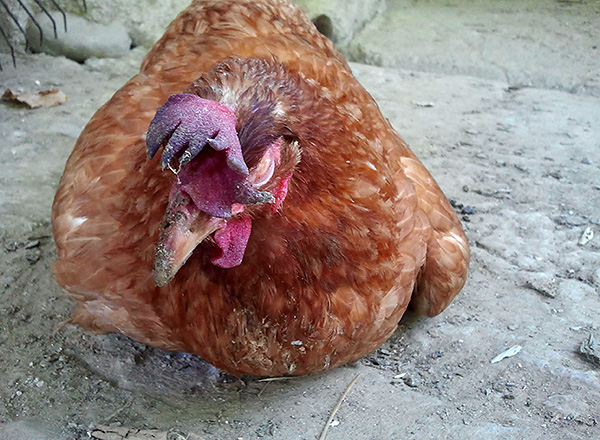
In cases of poisoning a large number of birds, it is advisable to consult a veterinarian to provide qualified assistance, with single poisonings you can act independently. Your task is to remove the toxin from the body as soon as possible.To do this, wash the stomach with a weak solution of potassium permanganate or activated charcoal by oral administration (you can use a syringe) in a volume of up to 2/3 of the goiter.
On a note
Do not eat eggs and meat of poisoned birds. Cases of egg poisoning of such hens are known even 10 days after treatment. Depending on the toxic substance, the process of removing the poison from the body of a bird can take more than 2 weeks. The veterinarian can give an accurate forecast.
But let us return to the considered method of getting rid of rodents in the chicken coop with the help of poison and note one more inconvenience of it - the need to search and collect dead rats in order to avoid infection of domestic animals with pathogens, the appearance of an unpleasant odor, as well as the possible eating of their relatives.
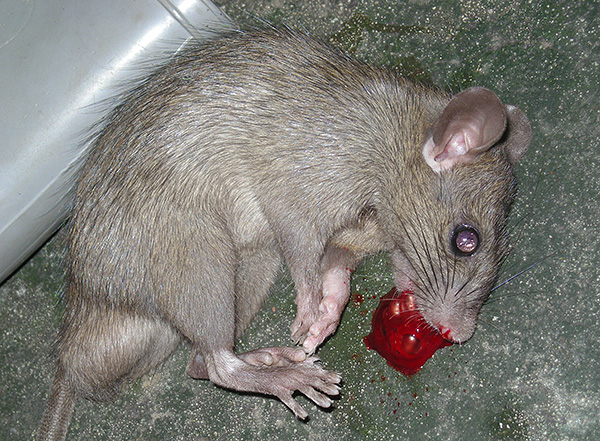
As a result, there are only two acceptable ways of exterminating rats in the chicken coop using poison:
- All chickens are temporarily transferred to another room, and poison is laid out in the old chicken coop, for example, “Rat Death” or “Zookumarin”. The rats die, then the house is clean, and the birds come back. To implement this method requires additional space and about a week or two;
- Another option is also possible - the chicken box houses the same box as for installing the rat trap. A heavy ceramic plate is put in the box and beer is poured with the addition of liquid poison for rats (Brommus, Bromed, Brodifan, Indan Fluid or others). The principle here is that rats readily drink beer and smell it well, but they can only use poison in food in the most closed box, where hens will not climb. The same can be done if beer is replaced with milk, but in this case the process can be delayed, because milk does not smell so much, and rats may not immediately detect it.
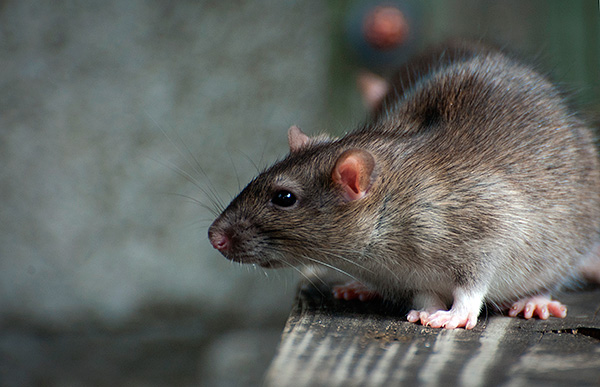
As in the case of traps, so that chickens do not eat rat poison, it can be placed in special plastic houses available on sale today, which are analogues of home-made boxes. It should also use only liquid poison baits, which rats can not pull out of the house. However, in general, these bait stations are quite expensive, and it can be easier to do them yourself from a cardboard box, which allows you to effectively get rid of rats at no additional cost.
Cat or dog as a chicken coop protector
Often, many owners of private households keep a cat on the site, but do not let it into the chicken coop for fear that it will crush chickens or chickens. As a result, the most reliable and effective rat-catcher remains out of work, and his owner has to puzzle over how to deal with rats in the chicken coop.
In fact, cats almost never choke poultry. Not only the owners of chickens, but often even pigeons, allow pets to freely enter pigeons and catch mice and rats here. In rare cases, when the cat still strangles the chicken, a single punishment is enough to prevent it from repeating in the future.
Therefore, if a cat lives on the site, which has already established itself as a rat trap, it makes sense to let it hunt rats in the chicken coop. It is possible to do nothing more and not have to do to pest.

Similarly, rat terriers or fox terriers are happy to hunt rats. True, they are less likely to spend hours waiting for prey sitting in a chicken coop, but often these dogs also help owners get rid of rats without the use of additional methods and tools.
Do folk remedies help get rid of rats?
But especially rely on various folk remedies to protect the chicken coop is not worth it. For example, legends that rats are afraid of the smell of mint, tansy, burning rubber and vinegar are widely known among the people.There are even tips for breeding rodents using perfumes, essential oils and tights.

In fact, such drugs rarely help get rid of rats. Even if the pests for the first few days will be wary of a new smell or object in the chicken coop, they will quickly get used to it and stop avoiding it. Anyway, it is quite problematic to discourage rats from a constant source of fresh chicken eggs using odors.
It is interesting
There is also an opinion that rats are afraid of guinea fowl. Allegedly, of all the poultry, guinea fowls for some reason are so scary for rats that they do not allow them to calmly manage in the chicken coop. In practice, this assumption is not confirmed, and even if several guinea fowls are planted in the chicken coop, the rats will not stop dragging eggs from here.
How to protect the chicken coop from rats entering it?
It is important to remember that even if the rats were able to get out of the chicken coop, it is necessary to provide protection against their repeated penetration. Otherwise, you will have to fight rodents regularly.
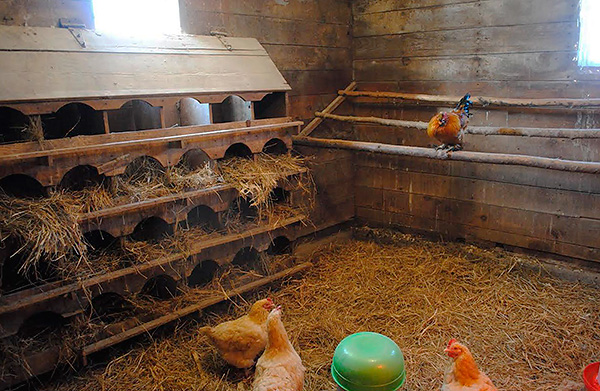
As a rule, to prevent rats from entering the chicken coop, it is enough:
- Strengthen the earthen floor - remove the layer of earth by 40 cm, fill the expanded clay with 30 cm and lay a fine-mesh metal netting (preferably with cells no more than 5x5 mm) over the entire area, then fill the earth back. It is important to ensure that such a barrier on the floor is no lower than the foundation of the chicken coop foundation, otherwise there will be no special meaning in these measures;
- Or you can make a normal concrete floor, which on top will be sprinkled with sawdust or sand;
- It is also necessary to cover all the cracks in the walls and the roof, through which rats can enter the chicken coop, to seal the joints between the walls and the foundation of the structure, and ideally to make full-fledged stone walls. Even a half-brick wall will already be an insurmountable obstacle for a rat.
Of course, it is also necessary to maintain cleanliness in the chicken coop - in this case it will be easier to notice traces of rat activity, for example, broken chicken eggs and rat excrement. The latter, by the way, is the easiest way to establish the presence of rodents.
On a note
The rat litter is dark in color, reaches a length of 10-14 mm and is usually located in small heaps. The simultaneous presence of large and small excrement already indicates the presence of a certain population of rodents (large and small animals).

Other characteristic signs that should make you start fighting rats as soon as possible:
- ammonia odor, especially strong in closed places;
- nibbled surfaces - the constant growth of teeth makes rats taste almost everything;
- "Treadmills", which are visible in dusty places traces of rodent movement.
And even more so, the holes made at the junction of the foundation and the walls, as well as the eggshell next to them clearly indicate that the pests got into the habit of dragging eggs here, and you need to start fighting them as soon as possible.
Interesting video: an example of how a cautious rat trades in a chicken coop
5 simple original rat traps

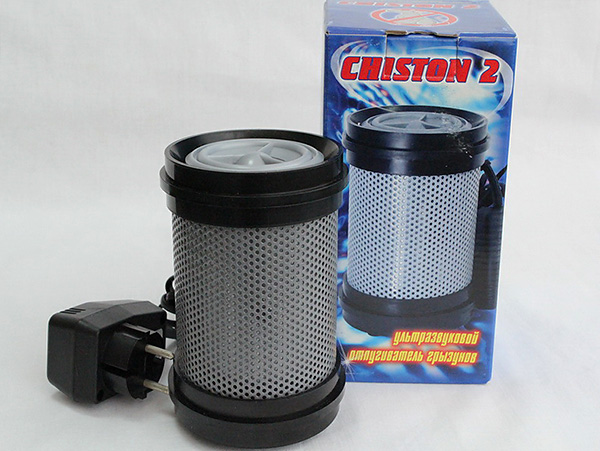
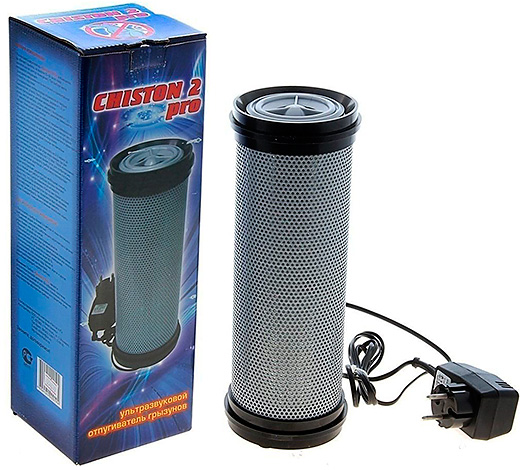

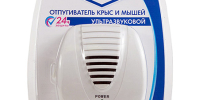


I am a director at a grocery store, our warehouse is not large, but not small either - 250 m2. It is divided into 2 rooms. I began to notice the strange smell of ammonia. Then the traces of small paws. Then nose to nose collided with a mouse. There was an urgent need to do something, mousetraps - the last century. I bought a Tornado (an ultrasonic repeller), so after 9-10 months it became covered with spots and ceased to fulfill its function. I did not understand, only wasting time, I bought Hawk 400 so that he would act both in the warehouse and in the hall. Works great, no rodents.